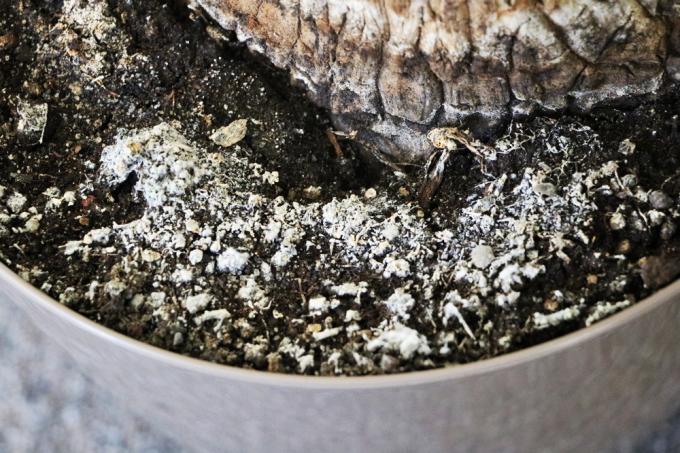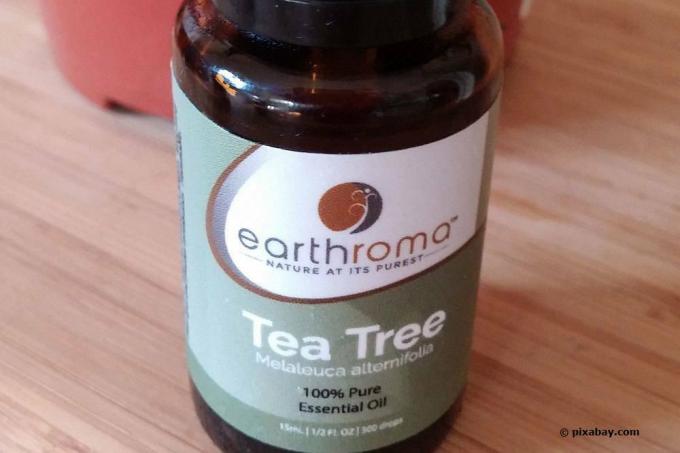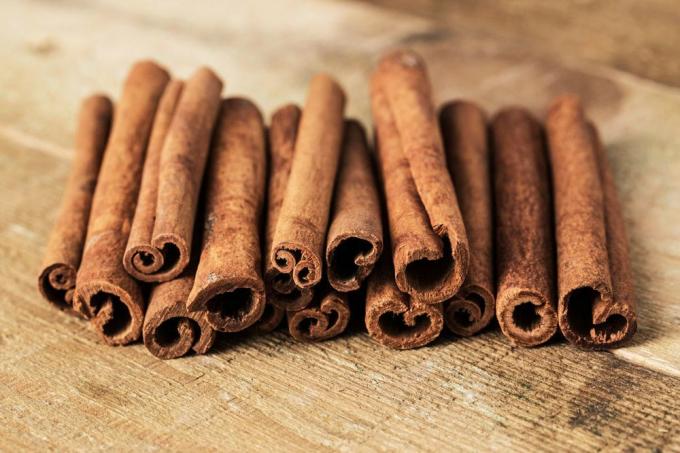
table of contents
- Mold in the potting soil
- Methods of Combat
- Fighting with sand
- Repot indoor plants
- Combat with home remedies
- Sterilize potting soil
Despite loving care, a whitish coating suddenly appears in the flower pot on the ground. Mold is not uncommon in indoor plants. In order to eliminate the danger quickly, targeted action is required. If the potting soil is moldy, here are 7 methods you should try.
Mold in the potting soil
Recognize mold
First of all, it must be clarified whether the whitish coating on the potting soil is actually mold. This phenomenon can generally have two different reasons. For one thing, the coating can be the result of water that is too hard. On the other hand, it is possible that the potting soil will go moldy. If the water with which the plants are watered is too hard, limestone will form on the surface of the substrate over time. As a rule, the deposited lime has a slightly yellowish tinge and a crumbly or even hard consistency. The mold, on the other hand, looks rather fluffy and soft.
Danger from mold growth
Although mold causes discomfort in connection with one's own home, it is in the Nature plays an important role in the cycle of the ecosystem, as it is separated from dead organisms feed. They are found in almost all soils and contribute to the formation of humus there. There they pose no danger to plants, humans or animals. They only become a health risk - especially for sensitive and allergic people - when they release spores.

Requirements for growth
Organic materials such as humus or compost are ideal breeding grounds for mold. If there is enough moisture, the fungus begins to grow. In order for the mold to spread at all, the following criteria are necessary:
- excess moisture (wet substrate or over 60% relative humidity)
- organic subsoil
- Depending on the type of mushroom, temperatures from 0 to 50 degrees
- low oxygen content in the substrate
- pH values between 4.5 and 6.5
Even sterile soil cannot be kept free of mold spores in the long term. As a rule, however, the fungus does not bother, as it does its work underground. If the conditions are optimal, however, it can spread suddenly and the potting soil becomes moldy.
By the way: clay floors or other substrates with a high mineral content are less prone to mold growth.
Methods of Combat
If the substrate surface becomes moldy, this is a sign that the fungus is forming spores in order to multiply. This fungal lawn should be removed quickly in any case. It is best to first bring plants whose soil is moldy outside. This prevents the spores from spreading uncontrollably in the room. It is advisable for sensitive people to wear gloves and a breathing mask.
Fighting with sand
To get rid of the mold on the potting soil, it is necessary to make the conditions for the fungus as uncomfortable as possible. The most common cause that the earth goes moldy is too well-intentioned watering behavior. If there are a lot of mold spores in the substrate, even a short period of watering can cause its surface to become moldy. So let the bale dry well first. In any case, remove the top layer of the potting soil, even if the mycelium is certainly to be found further down. Then cover the surface with a layer of mineral components about two centimeters thick.
The following are suitable for this:
- sand
- Expanded clay
- Pumice
- Lava granules

Due to the large surface area of these materials, the potting soil can dry out faster. In addition, they do not provide the mold with a suitable nutritional basis. This method is particularly suitable for plants that are in a large container on the balcony or terrace.
Repot indoor plants
In most cases it is not necessary to replace all of the potting soil. However, repotting can never do any harm. Provide the plant with fresh, high-quality potting soil that is well permeable for air and water not only remove the mold, but also prevent the formation of new mold before. Get the root ball out of the pot in a well-ventilated place on the balcony or terrace and remove as much of the old substrate as possible. If a lot of it sticks to the fine roots, the soil can be rinsed off with room warm water. For planting, you should preferably use high-quality, high-quality soil with a proportion of sand. If you put the plant back in the same pot, it must be cleaned and sterilized. You can kill the fungal spores in different ways:
- boiling water
- hot vinegar solution
- Alcohol (at least 70%)

Combat with home remedies
In addition to the purely mechanical removal of the mold, it can also be combated with various means in the potting soil. However, it is not advisable to use the chemical club for indoor plants. There are some home remedies that help fight substrate fungus and do not pollute the environment. The remedies primarily have a preventive effect, but are still effective to a limited extent when the earth is already visibly moldy.
Liverwort extract
Liverwort extract is a natural product that is quickly degradable in the soil without leaving any residue. In general, mosses have an anti-fungal effect. This effect is particularly pronounced in the three-lobed whip moss (Bazzania trilobata). It protects against a variety of fungi and other harmful pathogens and at the same time strengthens plants without being toxic to humans and animals.
- preventive: 5 ml of extract in 1 l of water
- Spray every 10 to 14 days
- acute: 20 ml liverwort extract in 100 ml water
- Spray three days in a row
By the way: It is also possible to use peat moss.
Tea tree oil
Tea tree oil is a natural all-rounder. It not only helps against sucking insects on plants, but also has a good effect against mold. A mixture of 15 to 20 ml of tea tree oil to one liter of water is usually sufficient to kill the mold spores on the potting soil. To do this, simply spray the solution onto the affected surface of the earth and repeat the procedure a few days later if necessary.

Tip: Alternatively, you can put cloths soaked with the mixture on the potting soil for about two days.
Activated carbon
Once a very small part of the substrate surface is covered with a fluffy white fungus coating, activated carbon can prevent further spread. To do this, sprinkle the powder finely on the potting soil and repeat the procedure if necessary after a few days.
cinammon
As an alternative to activated charcoal, sprinkling the earth's surface with cinnamon can kill the spores to some extent.

Sterilize potting soil
If the potting soil has already become moldy in the sack, you do not necessarily have to throw it away. Smaller quantities can be sterilized without any problems. The aseptic soil is perfect for sowing flowers and vegetables. Since the mushrooms cannot tolerate temperatures well above 60 degrees, they can be rendered harmless with heat treatment. However, this process also kills all other microorganisms and animals that are in the substrate. There are two simple ways to do this:
1. Sterilization in the microwave
Moisten the potting soil with water so that it is slightly damp. Then pour a flat layer into a microwave-safe container.
- 5 to 10 minutes
- highest step
2. oven
Alternatively, you can also sterilize the substrate in the oven.
- Preheat to 200 degrees
- Cover the tray with damp earth
- Treat for at least 20 minutes



